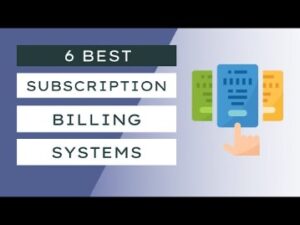
New York, on the other hand, only raises about 20 percent of its revenues from the sales tax. A sales tax is a consumption tax paid to a government on the sale of certain goods and services. Usually, the vendor collects the sales tax from the consumer as the consumer makes a purchase. In most countries, the sales tax is called value-added tax (VAT) or goods and services tax (GST), which is a different form of consumption tax. In some countries, the listed prices for goods and services are the before-tax value, and a sales tax is only applied during the purchase. In other countries, the listed prices are the final after-tax values, which include the sales tax.
How Much Does It Cost to Live in NYC? – Curbed
How Much Does It Cost to Live in NYC?.
Posted: Mon, 22 May 2023 07:00:00 GMT [source]
The state applies taxes progressively (as does the federal government), with higher earners paying higher rates. For your 2022 taxes (which you’ll file in early 2023), only individuals making more than $25,000,000 pay the top rate, and earners in the next bracket pay 0.6% less. Joint filers face the same rates, with brackets approximately double those of single filers. For example, the upper limit of the first bracket goes up from $8,500 to to $17,150 if you’re married and filing jointly. State and local sales tax rates vary from product to product, but are not always applied to services – it depends on the type of service and the state.
Do I Have to Pay Income Tax in New York?
Keep in mind that your final tax bill will also be influenced by other factors, including credits and deductions you may qualify for. Furthermore, a few other cities in New York State have tax rates that are different from rate in the county in which they are located. For example, the sales tax rate in Yonkers is 8.875%, whereas the rate in the county in which it is located – Westchester – is 8.375%. Enter your city and zip code below to find the combined sales tax rate for a location.

Rates are for reference only; may not include all information needed for filing. Use this site to share, analyze and compare data from governmental entities throughout New York. The information on this website comes from official https://www.bookstime.com/articles/prepaid-insurance-journal-entry government sources, but the Empire Center cannot guarantee data accuracy or completeness. In addition, you can estimate your take-home pay for a selected pay frequency – using our tool as a New York paycheck calculator.
Does New York have local taxes?
Your bi-weekly gross changes slightly in the first pay period of a leap year and in the first pay period after the end of a leap year, due to the one day difference. The following table is for those who are single and filing in New York for 2022. It also applies to married/registered domestic partners who file separately. This is the total amount withheld from your paychecks and applied directly to your federal tax bill over the course of a year based on your W-4 allowances. PaycheckCity delivers accurate paycheck calculations to tens of millions of individuals, small businesses, and payroll professionals every year since 1999. To learn more about how local taxes work, read this guide to local taxes.
New York State has a progressive income tax system, which means that the higher your income, the higher the tax rate you will pay. The New York State tax rate for 2022 ranges from 4% for those with an income of $8,500 or less to 8.82% for those with an income of $1 million or more. New York City and Yonkers have their own local income tax on top of the state tax. Use tax is not due on taxable property or services purchased by a user while a nonresident of that locality (that is, items purchased before you moved to, or had a residence in, that locality).
Experienced tax pros
If you owe $600 in taxes and have a $500 tax credit, your tax liability falls to $100. If you have a $500 credit and a $300 tax bill, you can only reduce your bill to zero. TaxAct E-File Concierge™ service provides phone calls and related support regarding federal e-file status changes using the phone number provided in My Account. Service is subject to availability and limited to federal e-filed tax returns. The following is an overview of the sales tax rates for different states. Similar to New York state, how you calculate your New York City taxes depends on your taxable income.
- We know New York is one of the most expensive cities in the world, and the fact that it has extra taxes compared to other states makes it more complicated to calculate.
- You may have extra paperwork if you live in New York City or Yonkers, since those cities assess local income tax on top of state tax.
- You are leaving AARP.org and going to the website of our trusted provider.
- Important to highlight that the married jointly filing taxpayers have a standard deduction of $16,050 from AGI.
- Self-employment tax consists of Social Security and Medicare taxes for
individuals who work for themselves.
- Joint filers face the same rates, with brackets approximately double those of single filers.
- The New York State tax rate for 2022 ranges from 4% for those with an income of $8,500 or less to 8.82% for those with an income of $1 million or more.
The value of your gift card is dependent on the offer available at the time you make the referral. If you (1) are self-employed as a sole proprietorship, an independent
contractor new york income tax rate or freelancer and (2) earn $400 or more, you may need to
pay SE tax. This is true even if you are paid in cash and do not
receive a 1099-MISC.
What You Need To Know About New York State Taxes
For more information about the definition of resident for sales tax purposes, see Form ST‑140-I, Instructions for Form ST-140. Average tax rate is the effective tax rate that you incur on your income. If your income is $100 with 20% average tax rate and 30% marginal tax rate, you pay $20 in taxes. In addition to the state income tax, the federal tax and social tax payments shall also be computed. Thus, the best way to decrease the tax amount is to reduce what you pay as state tax with tax credits such as the NYC School Tax Credit, the NYC Household Credit, or the NYC Real Property Credit. 🙋 AGI is gross income reduced by adjustments such as tuition costs, interest on student loans, alimony payments, and contributions to retirement accounts.

This means that when calculating New York taxes, you should first subtract that amount from your income (unless you have itemized deductions of a greater amount). As of right now, just six other states have a higher sales tax than New York, which is at 4%. The whole city tax rate of 8.875%, the highest overall rate in the state, is imposed on all five of New York City’s counties, including Richmond, New York, Kings and Queens. Other cities in New York State may have tax rates that differ from those in the county where they are situated. As an illustration, Yonkers levies a sales tax of 8.875%, yet Westchester, the county where Yonkers is situated, levies a sales tax of 4%.
Income Tax Rate By State
Enter your regular annual salary (numerals only) to calculate your bi-weekly gross. The upcoming table is for those who are married but filing jointly in New York for 2022. It also applies to registered domestic filing jointly and qualified widow(er)s.
How much is 400k salary after taxes in New York?
If you make $400,000 a year living in the region of New York, USA, you will be taxed $154,824. That means that your net pay will be $245,176 per year, or $20,431 per month. Your average tax rate is 38.7% and your marginal tax rate is 44.7%.
You are required to pay use tax when you purchase taxable property from a seller who is located outside of New York and you use that property in New York. The top New York estate tax rate is 16%, however it only applies if the taxable estate in the state is over $10,000,000,000. Progressive rates apply on money below that threshold, with the first $500,000 being taxed at a rate of 3.06%. Local assessors determine property values, and rates are calculated by local governments. New York’s estate tax is based on a graduated rate scale, with tax rates increasing from 5% to 16% as the value of the estate grows. The exemption for the 2021 tax year is $5.93 million, which means that any bequeathed estate valued below that amount is not taxable.
In addition, the calculator potentially omits information relevant to determining the exact income tax figures. The state tax includes a deduction of $8,000 for single filers and $16,050 for married filers. Deductions are used to lower your taxable income, while tax credits are subtracted from the amount you owe. Additional tax may also be due when taxable property or services are purchased that are not exempt in your locality but are exempt in the locality where they were purchased. You are required to pay use tax when you purchase taxable services outside New York State and you use those services in New York State. Examples of these services include taxable information services and protective (security) and detective services.

Still, if you experience a relevant drawback or encounter any inaccuracy, we are always pleased to receive helpful feedback and advice. They also include a standard deduction of $8,000 for singles, $16,050 for a couple, and exemptions of $1,000 if you register yourself as a dependent. In that table, you will notice that you reach the 12% bracket, but your income is only partially taxed at that percentage. Our partners cannot pay us to guarantee favorable reviews of their products or services. The tax on a motor vehicle, trailer, or vessel that must be registered or titled by the New York State Department of Motor Vehicles (DMV) will be collected by DMV when you register it.







